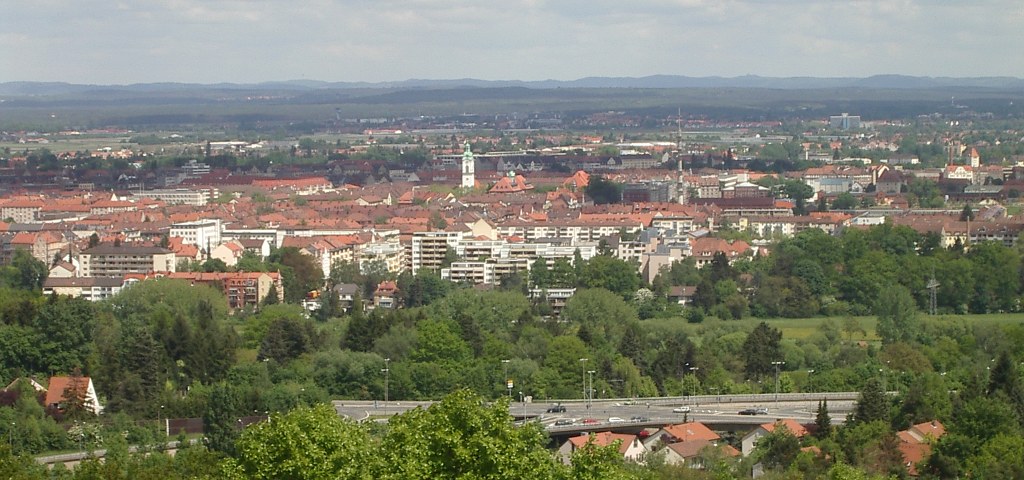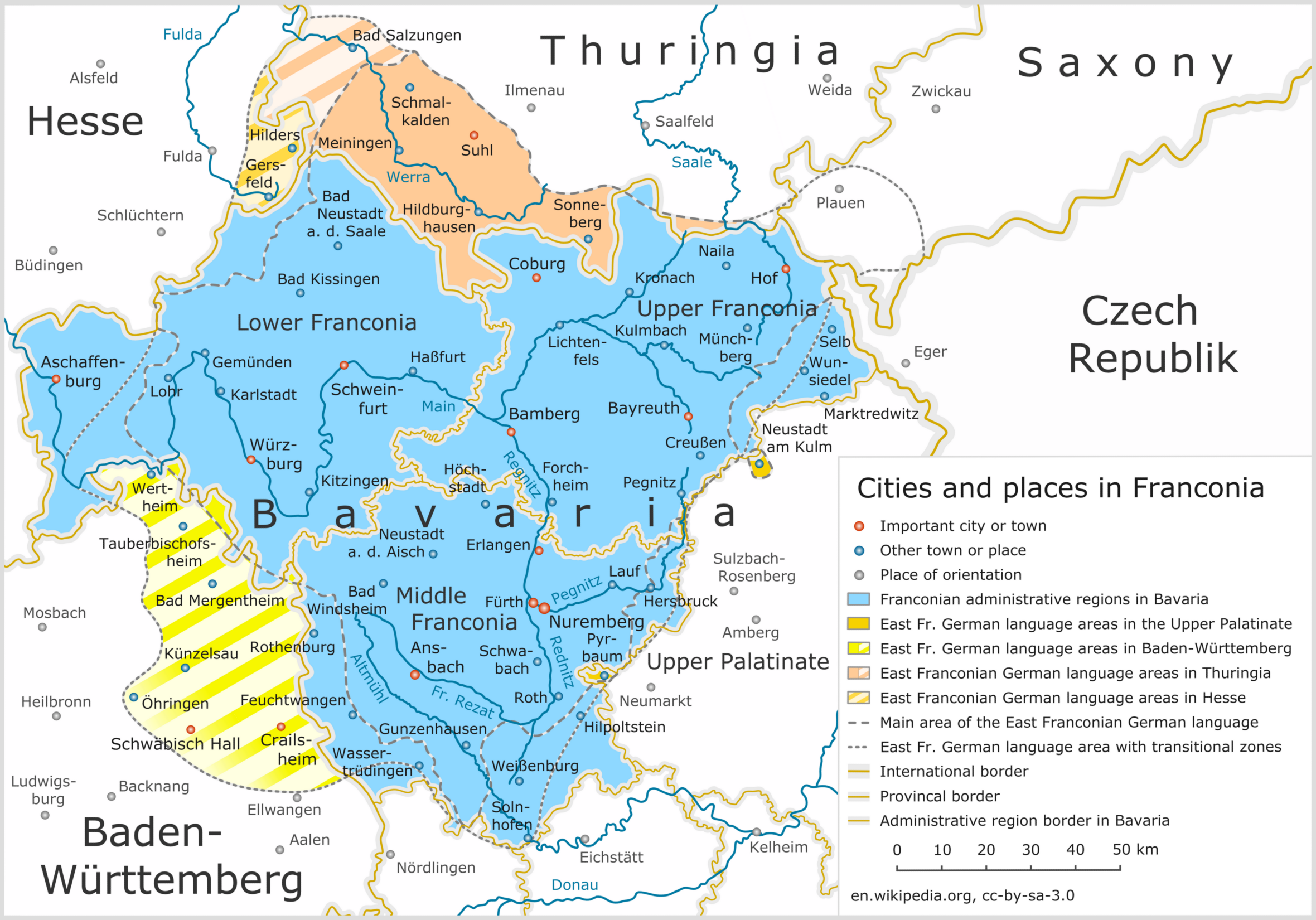|
Zirndorf
Zirndorf () is a town, which is part of the district of Fürth. It is located in northern Bavaria, Germany in the Regierungsbezirk of Middle Franconia. Neighbouring municipalities The following towns and municipalities share borders with Zirndorf; they are listed in clockwise order, starting in the north: * Fürth * Oberasbach * Stein * Roßtal * Ammerndorf * Cadolzburg History The first mention of the town occurs in a document dated 9 September 1297. The town was virtually destroyed during the Thirty Years' War, though the brewing industry established in the late seventeenth century helped in its recovery. In the mid-nineteenth century, the toy industry contributed to the town’s industrial development, and remains important today. Pinder Barracks In 1935 the city of Zirndorf applied to the German Reich Administration to have a caserne built here. The application was approved, with the condition of Reichsmarschall Hermann Göring, that construction must be in the Fra ... [...More Info...] [...Related Items...] OR: [Wikipedia] [Google] [Baidu] |
Fürth (district)
Fürth is a ''Landkreis'' (district) in Bavaria, Germany. It is bounded by (from the east and clockwise) the cities of Fürth and Nuremberg, and by the districts of Roth, Ansbach, Neustadt (Aisch)-Bad Windsheim and Erlangen-Höchstadt. History In the 13th and most of the 14th century the region was a regional centre of the Hohenzollern state. The Cadolzburg (a castle west of Nuremberg) was the seat of the local rulers. The present district was established in 1972. In 2003 the administrative seat was moved from Fürth to Zirndorf. (Nonetheless, Fürth remains the official capital of the district.) Geography The district is occupied by the western Nuremberg metropolitan area. Politics The district is part of the Fürth constituency for elections to the Bundestag The Bundestag (, "Federal Diet (assembly), Diet") is the lower house of the Germany, German Federalism in Germany, federal parliament. It is the only constitutional body of the federation directly elec ... [...More Info...] [...Related Items...] OR: [Wikipedia] [Google] [Baidu] |
Cadolzburg
Cadolzburg (outdated also ''Kadolzburg'' , colloquially pronounced "Kalschbuʳch" or "Sporch" in the local dialect) is a municipality in the Middle Franconian Fürth (district), district of Fürth, in Bavaria, Germany. It is situated west of Fürth. Its name derives from its central castle, first being mentioned in the year 1157. Geography The topography varies significantly in its height. Neighborhood Neighboring Municipalities are: (beginning in the north then going clockwise) * Veitsbronn * Seukendorf * Fürth * Zirndorf * Ammerndorf * Großhabersdorf * Langenzenn, Langenzen Districts Cadolzburg consists of the city itself and 15 farther districts: History Middle Ages The place was first mentioned in 1157 when the reeve of Kadolzburg, Helmericus de Kadoldesburc, agreed on a territorial exchange between the Bishopric of Würzburg, diocese of Würzburg the Heilsbronn Abbey. So the name derives from ''Burg des Kadold'' meaning "Kadold's castle". If the castle had ... [...More Info...] [...Related Items...] OR: [Wikipedia] [Google] [Baidu] |
Franconia
Franconia ( ; ; ) is a geographical region of Germany, characterised by its culture and East Franconian dialect (). Franconia is made up of the three (governmental districts) of Lower Franconia, Lower, Middle Franconia, Middle and Upper Franconia in Bavaria, the adjacent, East Franconian, Franconian-speaking South Thuringia, south of the Thuringian Forest—which constitutes the language boundary between Franconian and Thuringian—and the eastern parts of Heilbronn-Franconia in Baden-Württemberg. Those parts of the Vogtland lying in Saxony (largest city: Plauen) are sometimes regarded as Franconian as well, because the Vogtlandian dialects are mostly East Franconian. The inhabitants of Saxon Vogtland, however, mostly do not consider themselves Franconian. On the other hand, the inhabitants of the Hessian dialect, Hessian-speaking parts of Lower Franconia west of the Spessart (largest city: Aschaffenburg) do consider themselves Franconian, although not speaking the dialect. He ... [...More Info...] [...Related Items...] OR: [Wikipedia] [Google] [Baidu] |
Fürth
Fürth (; East Franconian German, East Franconian: ; ) is a List of cities and towns in Germany, city in northern Bavaria, Germany, in the administrative division (''Regierungsbezirk'') of Middle Franconia. It is the Franconia#Towns and cities, second-largest city in Franconia and now contiguous with the larger city of Nuremberg, the centres of the two cities being only apart. The city forms a continuous conurbation with the neighbouring cities of Nuremberg, Erlangen and Schwabach, which is the heart of an urban area region with around 1.4 million inhabitants, while the larger Nuremberg Metropolitan Region has a population of approximately 3.6 million. Fürth celebrated its thousand-year anniversary in 2007, its first mention being on 1 November 1007. Geography The historic centre of the town is to the east and south of the rivers Rednitz and Pegnitz River, Pegnitz, which join to form the Regnitz to the northwest of the Old Town. To the west of the town, on the far side ... [...More Info...] [...Related Items...] OR: [Wikipedia] [Google] [Baidu] |
Stein, Bavaria
Stein (; East Franconian: ''Schdah'') is a town in the district of Fürth, in Bavaria, Germany. It is situated 7 km south of Fürth, and 7 km southwest of Nuremberg (centre). Geography Stein is located in the metropolitan area Nürnberg/Fürth/Erlangen in Middle Franconia, Bavaria and is a part of the district of Fürth. It adjoins to Nuremberg in the north-west and lies on the left bank of the river Rednitz. Neighboring municipalities are Nuremberg, Rohr, Roßtal, Zirndorf and Oberasbach. Stein is divided into 11 districts: History Stein has first been mentioned in a document dating back to 1296. The origin of the settlement is linked to the first ''Rednitzbrücke'', a bridge which first crossed the river Rednitz. It was referred to as “Steinbruke” and probably caused the town's naming. In 1498, the two famous sculptors Veit Stoss and Adam Kraft were appointed as counselors for construction works on the bridge. Between the 15th and the 17th century ... [...More Info...] [...Related Items...] OR: [Wikipedia] [Google] [Baidu] |
Stadtteil
A quarter is a part of an urban area, urban settlement. A quarter can be administratively defined and its borders officially designated, and it may have its own administrative structure (subordinate to that of the city, town or other urban area). Such a division is particularly common in countries like Bulgaria (), Croatia (), France (), Georgia (country), Georgia (, ''k'vart'ali''), Italy (), Romania (), and Serbia ( / ). It may be denoted as a borough (in English-speaking countries), Portugal/Brazil (), Spain (''barrio''); or some other term (e.g. Cambodia ( ''sangkat''), Germany (), and Poland ()). Quarter can also refer to a non-administrative but distinct neighbourhood with its own character: for example, a slum quarter. It is often used for a district connected with a particular group of people: for instance, some cities are said to have Jewish quarter (diaspora), Jewish quarters, diplomatic quarters or Bohemianism, Bohemian quarters. History Most ancient Rome, ancient R ... [...More Info...] [...Related Items...] OR: [Wikipedia] [Google] [Baidu] |
Hermann Göring
Hermann Wilhelm Göring (or Goering; ; 12 January 1893 – 15 October 1946) was a German Nazism, Nazi politician, aviator, military leader, and convicted war criminal. He was one of the most powerful figures in the Nazi Party, which governed Germany from 1933 to 1945. He also served as ''Oberkommando der Luftwaffe, Oberbefehlshaber der Luftwaffe'' (Supreme Commander of the Air Force), a position he held until the final days of the regime. He was born in Rosenheim, Kingdom of Bavaria, Bavaria. A veteran World War I fighter pilot Flying aces, ace, Göring was a recipient of the . He served as the last commander of Jagdgeschwader 1 (World War I), ''Jagdgeschwader'' 1 (JG I), the fighter wing once led by Manfred von Richthofen. An early member of the Nazi Party, Göring was among those wounded in Adolf Hitler's failed Beer Hall Putsch in 1923. While receiving treatment for his injuries, he developed an addiction to morphine that persisted until the last year of his life. Aft ... [...More Info...] [...Related Items...] OR: [Wikipedia] [Google] [Baidu] |
Luftwaffe
The Luftwaffe () was the aerial warfare, aerial-warfare branch of the before and during World War II. German Empire, Germany's military air arms during World War I, the of the Imperial German Army, Imperial Army and the of the Imperial German Navy, Imperial Navy, had been disbanded in May 1920 in accordance with the terms of the 1919 Treaty of Versailles, which banned Germany from having any air force. During the interwar period, German pilots were trained secretly in violation of the treaty at Lipetsk (air base), Lipetsk Air Base in the Soviet Union. With the rise of the Nazi Party and the repudiation of the Versailles Treaty, the Luftwaffe's existence was publicly acknowledged and officially established on 26 February 1935, just over two weeks before open defiance of the Versailles Treaty through German rearmament and conscription would be announced on 16 March. The Condor Legion, a Luftwaffe detachment sent to aid Nationalist faction (Spanish Civil War), Nationalist for ... [...More Info...] [...Related Items...] OR: [Wikipedia] [Google] [Baidu] |
Anti-Aircraft
Anti-aircraft warfare (AAW) is the counter to aerial warfare and includes "all measures designed to nullify or reduce the effectiveness of hostile air action".AAP-6 It encompasses surface-based, subsurface ( submarine-launched), and air-based weapon systems, in addition to associated sensor systems, command and control arrangements, and passive measures (e.g. barrage balloons). It may be used to protect naval, ground, and air forces in any location. However, for most countries, the main effort has tended to be homeland defense. Missile defense is an extension of air defence, as are initiatives to adapt air defence to the task of intercepting any projectile in flight. Most modern anti-aircraft (AA) weapons systems are optimized for short-, medium-, or long-range air defence, although some systems may incorporate multiple weapons (such as both autocannons and surface-to-air missiles). 'Layered air defence' usually refers to multiple 'tiers' of air defence systems which, w ... [...More Info...] [...Related Items...] OR: [Wikipedia] [Google] [Baidu] |
Third Reich
Nazi Germany, officially known as the German Reich and later the Greater German Reich, was the German state between 1933 and 1945, when Adolf Hitler and the Nazi Party controlled the country, transforming it into a totalitarian dictatorship. The Third Reich, meaning "Third Realm" or "Third Empire", referred to the Nazi claim that Nazi Germany was the successor to the earlier Holy Roman Empire (800–1806) and German Empire (1871–1918). The Third Reich, which the Nazis referred to as the Thousand-Year Reich, ended in May 1945, after 12 years, when the Allies defeated Germany and entered the capital, Berlin, ending World War II in Europe. After Hitler was appointed Chancellor of Germany in 1933, the Nazi Party began to eliminate political opposition and consolidate power. A 1934 German referendum confirmed Hitler as sole '' Führer'' (leader). Power was centralised in Hitler's person, and his word became the highest law. The government was not a coordinated, coopera ... [...More Info...] [...Related Items...] OR: [Wikipedia] [Google] [Baidu] |
Caserne
A casern, also spelled cazern or caserne, is a military barracks in a garrison town.Les gens de guerre à Saint-Julien-du-Sault, J Crédé, Imprimerie Fostier, 1976 In French-speaking countries, a ''caserne de pompier'' is a fire station. In fortification, caserns are little rooms, lodgments, or apartments, erected between the Defensive wall, ramparts, and the houses of fortified towns, or even on the ramparts themselves; to serve as lodgings for the soldiers of the garrison, to ease the garrison, in Portugal and Brazil "Quartel" (derived for 4 faces). There are usually two beds in each casern, for six soldiers to lie, who mount the guard alternately; the third part being always on duty. References Fortification (architectural elements) Barracks {{fort-stub ... [...More Info...] [...Related Items...] OR: [Wikipedia] [Google] [Baidu] |








